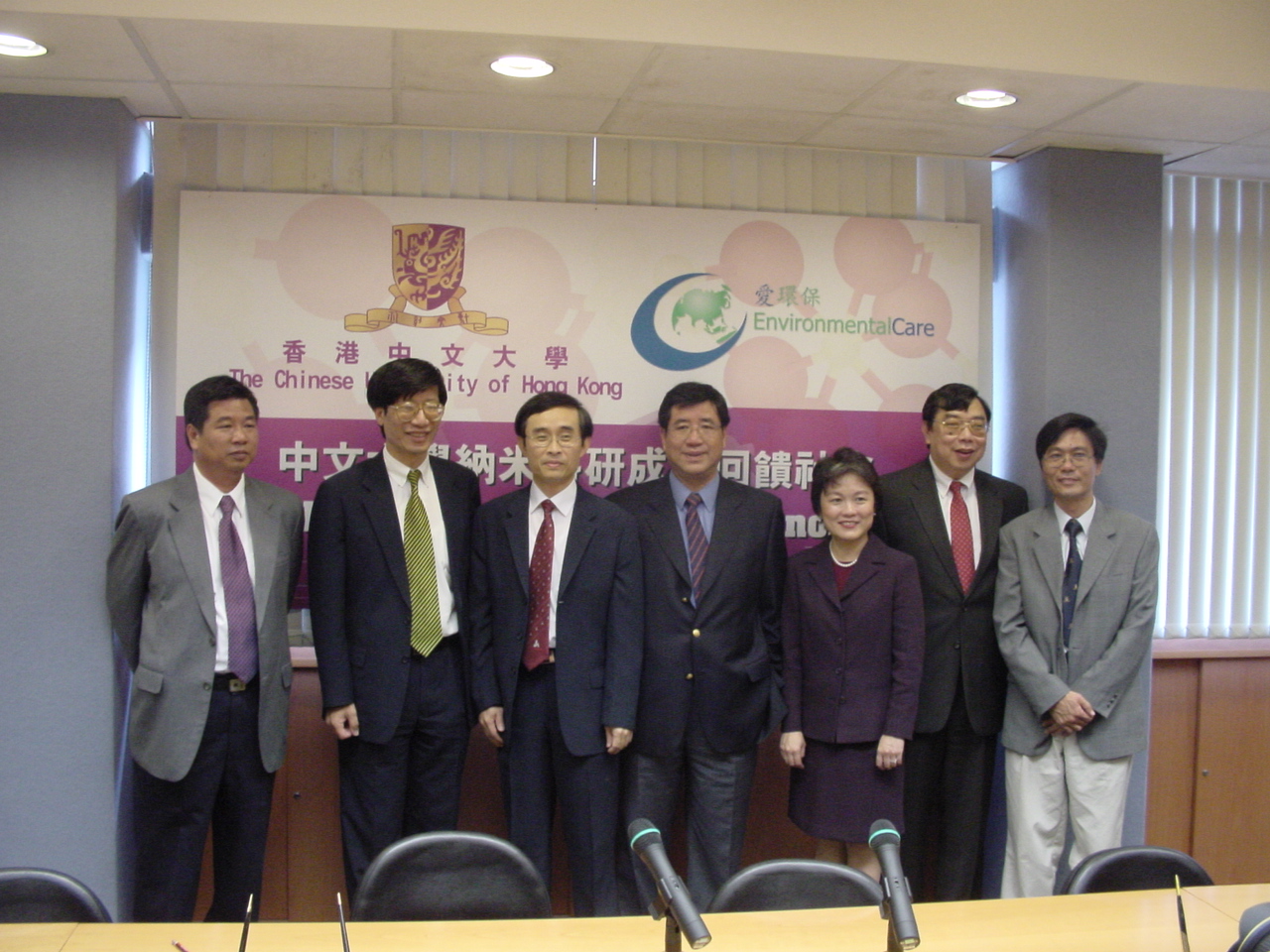
P R E S S R E L E A S E
7 October, 2002
Technological Advance Benefits Health and Hygiene
The Chinese University of Hong Kong (CUHK) announces research results in nanotechnology that is being applied and making a contribution to the community. For the first time in Hong Kong, nanotechnology is not just a buzzword or a promise, but a reality.
Researchers at CUHK have successfully developed state-of-the-art photocatalytic oxidation technology and transferred the results to industry. NanoPCO™ technology has been commercialized and has been licensed to EnvironmentalCare Ltd, an industry leader in environmental protection products, for use in their high-end water treatment system and air purification system.
The first application of this new technology, developed by Professor Jimmy Yu Chai-mei of the Department of Chemistry, involves the deposition of a uniform nanometer titanium dioxide coating on a solid substrate. The coating exhibits strong photocatalytic activity under ultraviolet irradiation. As a result, it can oxidize most organic and inorganic pollutants, and kill bacteria such as E. coli and Vibrio cholerae in seconds. This leads to a very attractive and safe technology for water treatment. This new treatment system has been proved to be more effective than conventional UV irradiation, and can be applied to treatment of drinking water, industrial or agricultural waste water and sea water. Currently, water treatment systems have been installed in many local seafood restaurants, employing this NanoPCO™ technology and providing an easy, effective and reliable disinfection option at low cost.
The second licence, which introduces a new approach for cleaning up the air, was sealed today. Thin films of nano-crystalline titanium dioxide are coated on inert substrates such as stainless steel mesh, which then exhibit enhanced photocatalytic activity for removal of organic pollutants and destruction of bacteria and viruses. This new photocatalyst overcomes the poor solar efficiency of traditional photocatalysts, making commercialization possible. This air purification system can be installed at hospitals, offices, schools, restaurants and homes.
The NanoPCO™ technology is a breakthrough in photocatalytic oxidation technology and was developed with the support of the Innovation and Technology Fund (ITF). One of the objectives of ITF is to stimulate private-sector interest in research and development (R & D) through leveraging the knowledge and resources of local universities. Since 2000, CUHK has received 40 grants from ITF and many of these projects have already borne fruit by producing new ideas and innovative technologies for society.
EnvironmentalCare, an acknowledged local leader in the environmental business, provides a full range of consultations and services in environmental monitoring, management, and improvement, with the aim of providing practical solutions to achieve a healthy living environment. The company has been developing applications based on the photocatalytic oxidation technology under the trade name "Fotocide" since 2000. Based on the latest nano-coating technology developed by CUHK, EnvironmentalCare recently launched a new series of products under the trade name of Nano-Fotocide™. The company has tested and used photocatalyic oxidation products from the USA and Japan but found that devices with the newly invented photocatalytic nano-coating display the highest efficacy. In April 2002, the photocatalytic oxidation technology was approved by the HKSAR government for fish tank water disinfection.
EnvironmentalCare employs the line of Nano-Fotocide™ products to serve the community by:
1. removing water-borne pathogens and dissolved pollutants from fish tanks to reduce potential environmental health risks, and also cleaning drinking water for enhanced safety and quality;
2. disinfecting and processing sewage contaminants prior to discharge into the ocean, thus safeguarding and protecting the marine environment; and
3. channeling polluted-air through the engineered photocatalytic modules, thus greatly reducing air-borne environmental health risks and the likelihood of conditions such as respiratory and cardio-pulmonary infections and dysfunctions.
Photo (from left to right):
Mr Leung Ping Kwong, Executive Director, EnvironmentalCare
Ltd
Prof Kenneth Young, Pro-Vice-Chancellor, CUHK
Prof Jimmy Yu, Department of Chemisty, CUHK
Mr Leung Chan Ming, Chairman, EnvironmentalCare Ltd
Mrs Alice Yip, Research and Technology Administration Office,
CUHK
Prof Chan Sai Chung, Managing Director, EnvironmentalCare
Ltd
Prof Leo Lau, Director, Institute of Science and Technology,
CUHK
